Abstract
Silicon is the second most abundant element in soils, the mineral substrate for most of the world's plant life. The soil water, or the "soil solution," contains silicon, mainly as silicic acid, H4SiO4, at 0.1-0.6 mM--concentrations on the order of those of potassium, calcium, and other major plant nutrients, and well in excess of those of phosphate. Silicon is readily absorbed so that terrestrial plants contain it in appreciable concentrations, ranging from a fraction of 1% of the dry matter to several percent, and in some plants to 10% or even higher. In spite of this prominence of silicon as a mineral constituent of plants, it is not counted among the elements defined as "essential," or nutrients, for any terrestrial higher plants except members of the Equisitaceae. For that reason it is not included in the formulation of any of the commonly used nutrient solutions. The plant physiologist's solution-cultured plants are thus anomalous, containing only what silicon is derived as a contaminant of their environment. Ample evidence is presented that silicon, when readily available to plants, plays a large role in their growth, mineral nutrition, mechanical strength, and resistance to fungal diseases, herbivory, and adverse chemical conditions of the medium. Plants grown in conventional nutrient solutions are thus to an extent experimental artifacts. Omission of silicon from solution cultures may lead to distorted results in experiments on inorganic plant nutrition, growth and development, and responses to environmental stress.
Full text
PDF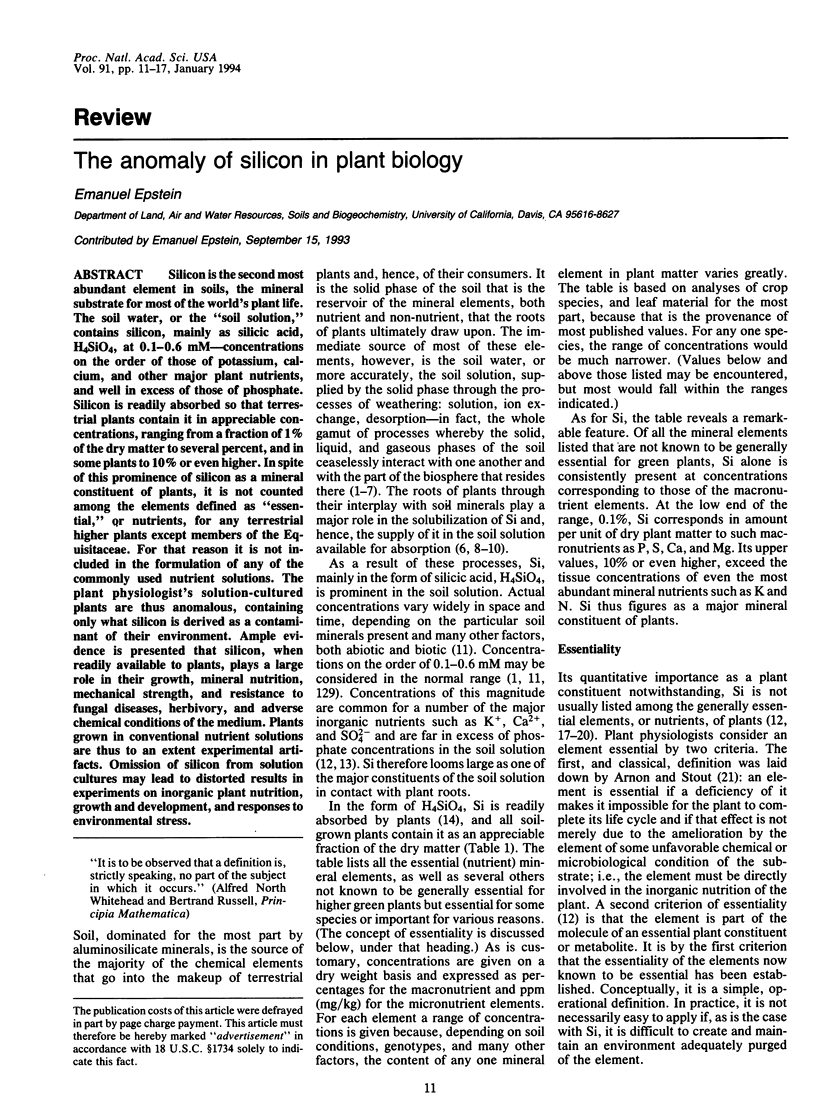
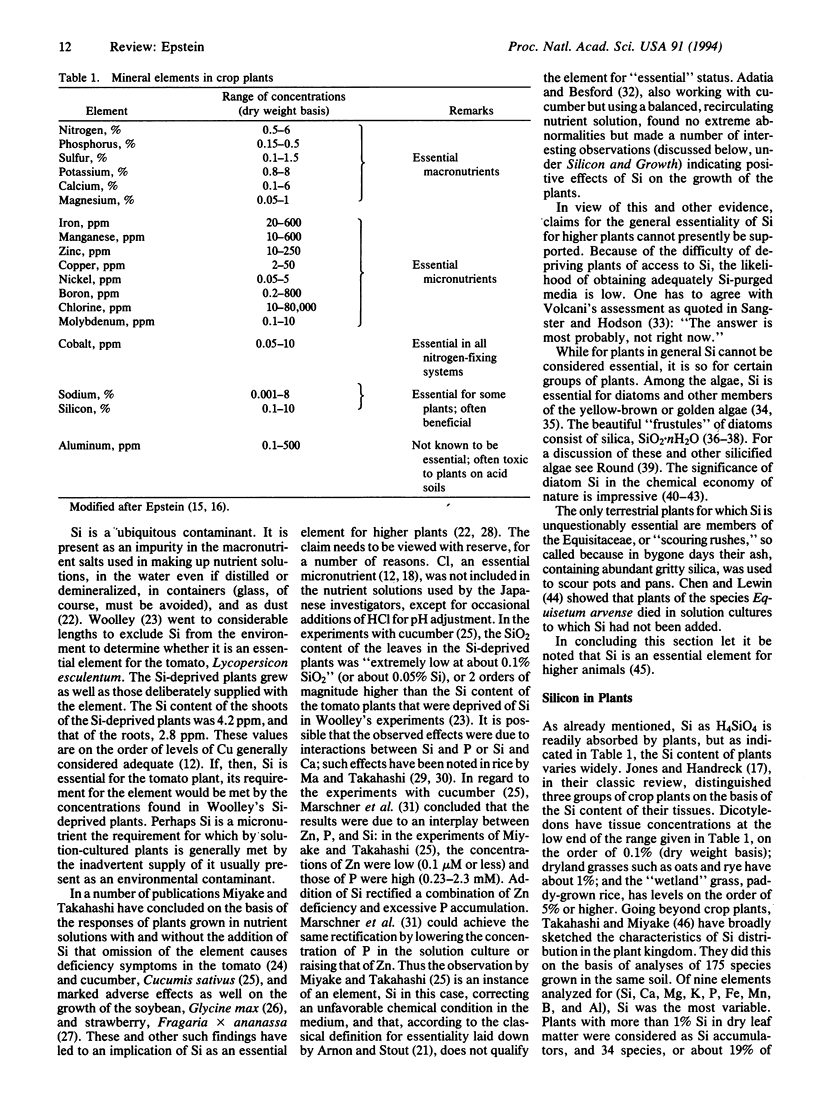
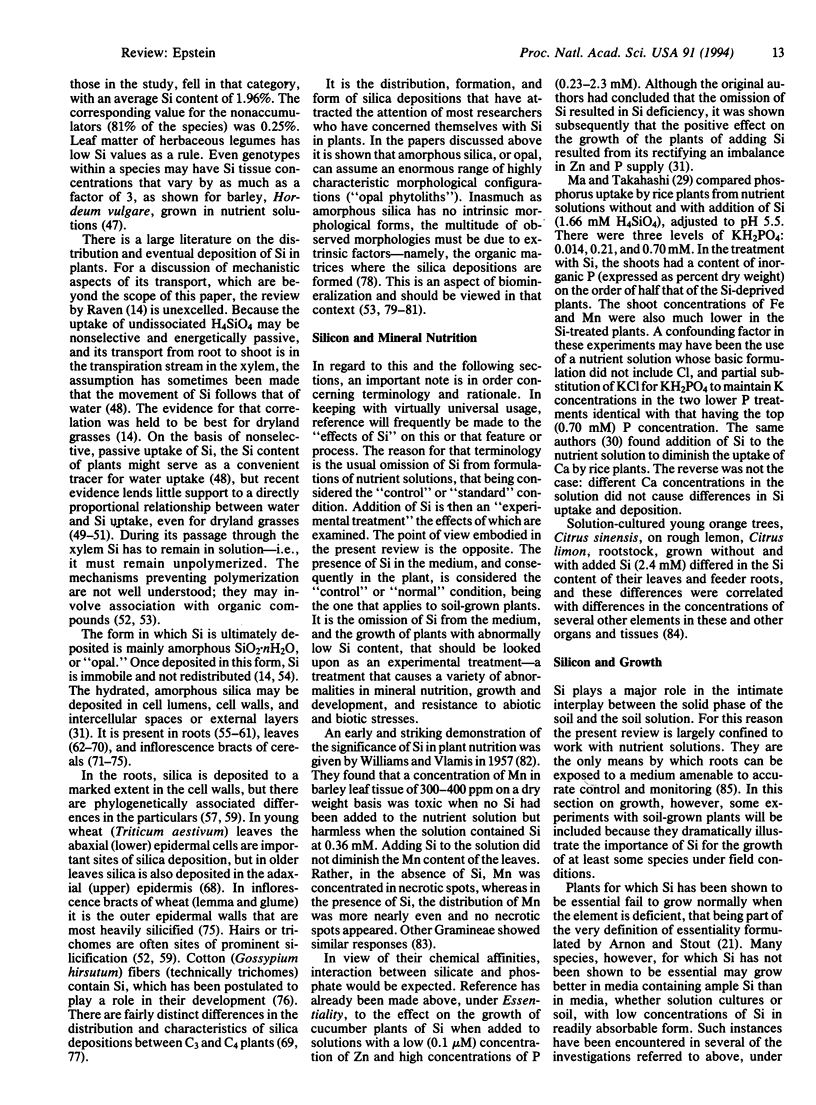
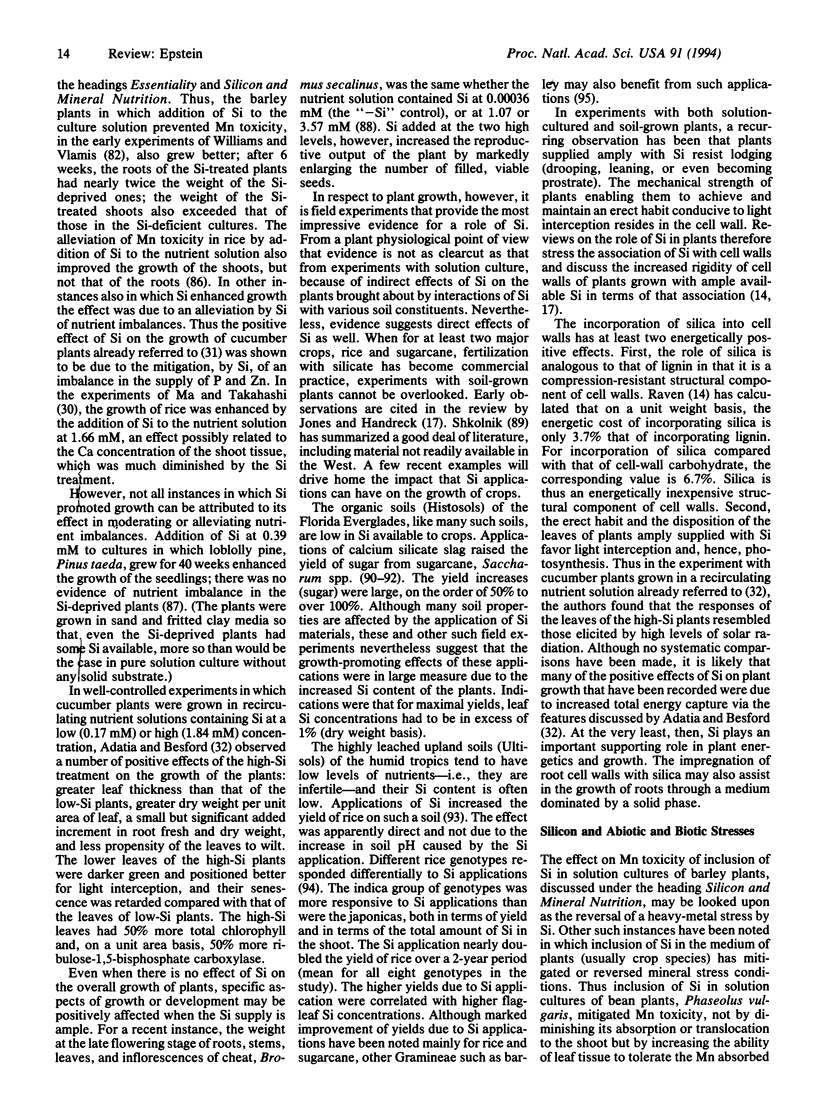
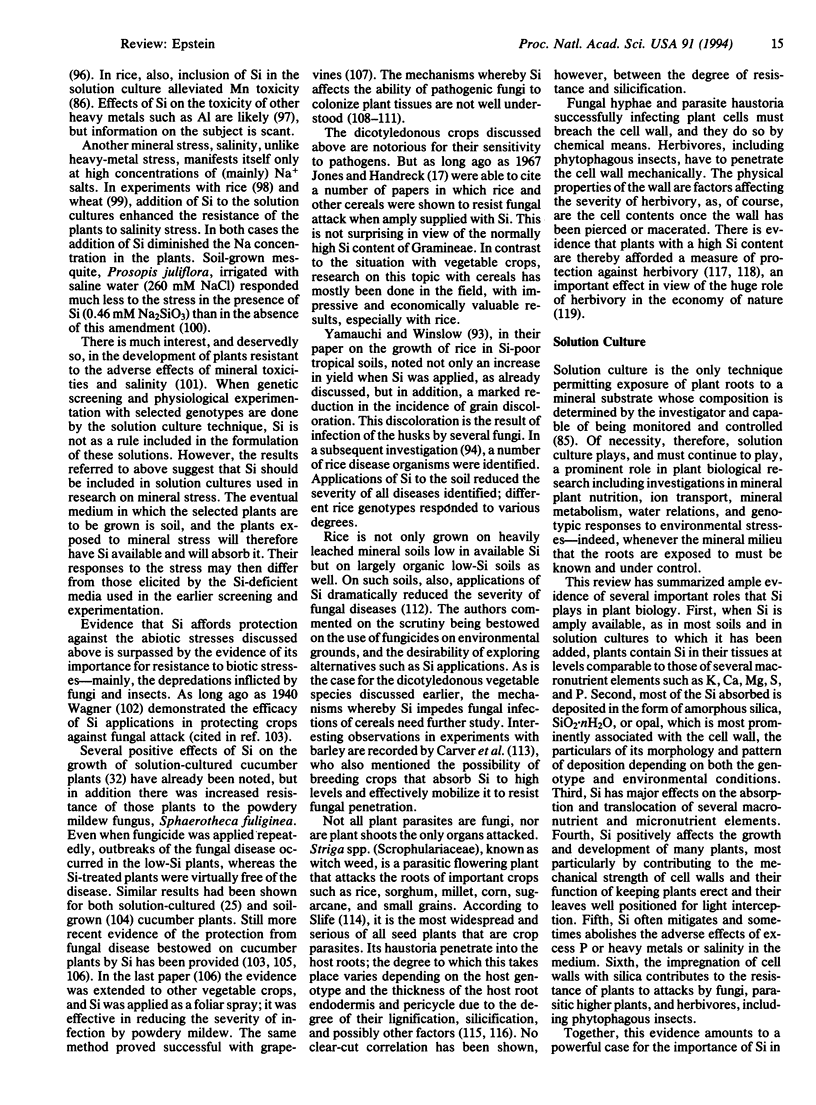
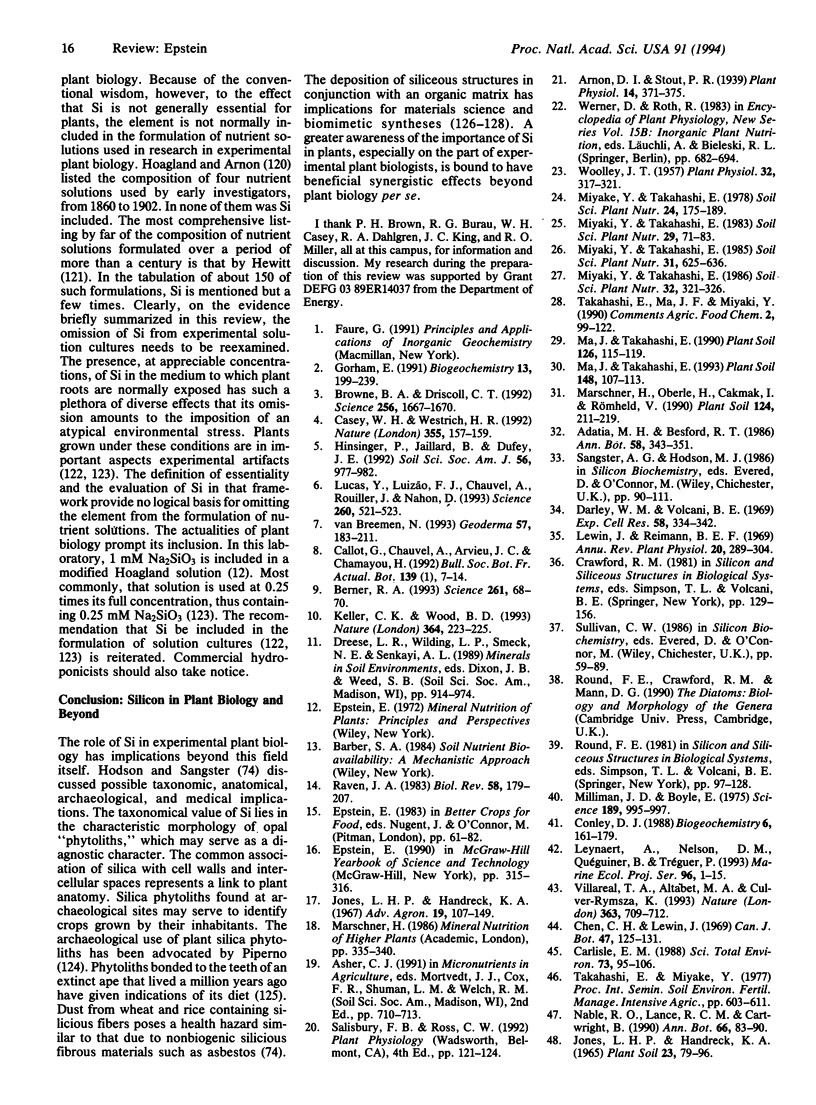
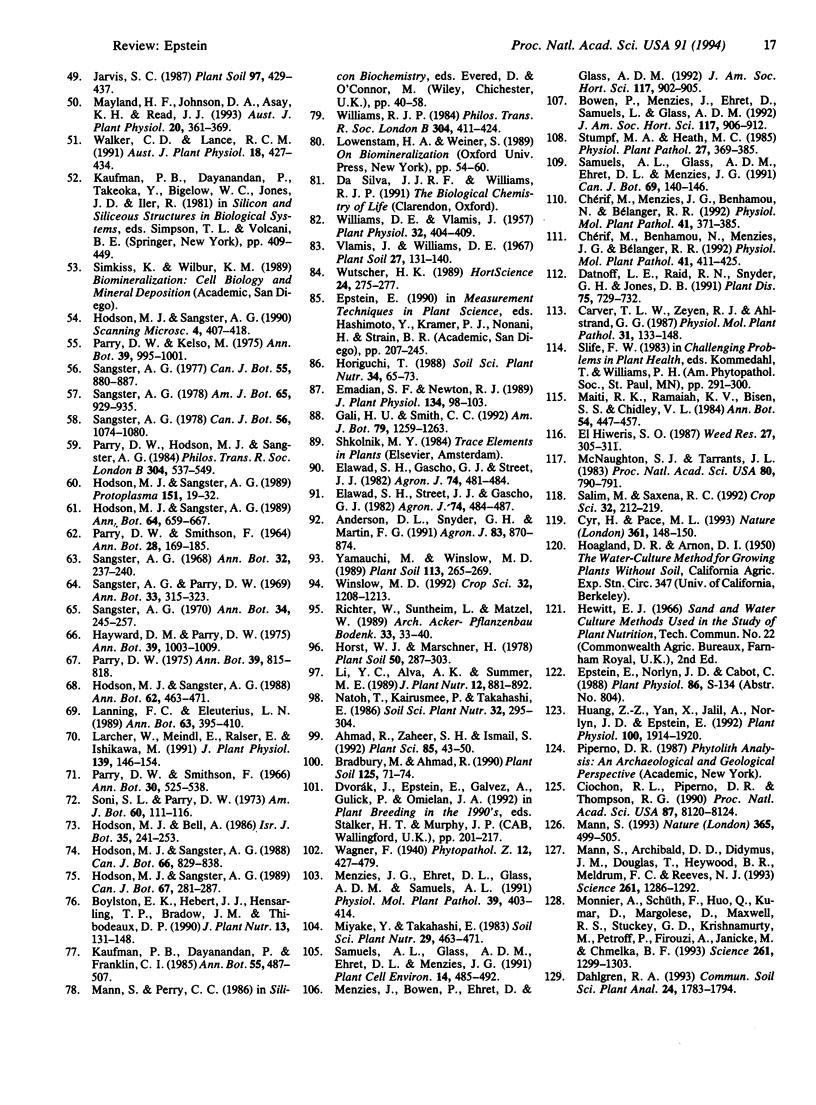
Selected References
These references are in PubMed. This may not be the complete list of references from this article.
- Arnon D. I., Stout P. R. THE ESSENTIALITY OF CERTAIN ELEMENTS IN MINUTE QUANTITY FOR PLANTS WITH SPECIAL REFERENCE TO COPPER. Plant Physiol. 1939 Apr;14(2):371–375. doi: 10.1104/pp.14.2.371. [DOI] [PMC free article] [PubMed] [Google Scholar]
- Berner R. A. Paleozoic Atmospheric CO2: Importance of Solar Radiation and Plant Evolution. Science. 1993 Jul 2;261(5117):68–70. doi: 10.1126/science.261.5117.68. [DOI] [PubMed] [Google Scholar]
- Browne B. A., Driscoll C. T. Soluble aluminum silicates: stoichiometry, stability, and implications for environmental geochemistry. Science. 1992 Jun 19;256(5064):1667–1670. doi: 10.1126/science.256.5064.1667. [DOI] [PubMed] [Google Scholar]
- Carlisle E. M. Silicon as a trace nutrient. Sci Total Environ. 1988 Jul 1;73(1-2):95–106. doi: 10.1016/0048-9697(88)90190-8. [DOI] [PubMed] [Google Scholar]
- Ciochon R. L., Piperno D. R., Thompson R. G. Opal phytoliths found on the teeth of the extinct ape Gigantopithecus blacki: implications for paleodietary studies. Proc Natl Acad Sci U S A. 1990 Oct;87(20):8120–8124. doi: 10.1073/pnas.87.20.8120. [DOI] [PMC free article] [PubMed] [Google Scholar]
- Darley W. M., Volcani B. E. Role of silicon in diatom metabolism. A silicon requirement for deoxyribonucleic acid synthesis in the diatom Cylindrotheca fusiformis Reimann and Lewin. Exp Cell Res. 1969 Dec;58(2):334–342. doi: 10.1016/0014-4827(69)90514-x. [DOI] [PubMed] [Google Scholar]
- Huang Z. Z., Yan X., Jalil A., Norlyn J. D., Epstein E. Short-term experiments on ion transport by seedlings and excised roots : technique and validity. Plant Physiol. 1992 Dec;100(4):1914–1920. doi: 10.1104/pp.100.4.1914. [DOI] [PMC free article] [PubMed] [Google Scholar]
- Lucas Y., Luizao F. J., Chauvel A., Rouiller J., Nahon D. The relation between biological activity of the rain forest and mineral composition of soils. Science. 1993 Apr 23;260(5107):521–523. doi: 10.1126/science.260.5107.521. [DOI] [PubMed] [Google Scholar]
- Mann S., Archibald D. D., Didymus J. M., Douglas T., Heywood B. R., Meldrum F. C., Reeves N. J. Crystallization at Inorganic-organic Interfaces: Biominerals and Biomimetic Synthesis. Science. 1993 Sep 3;261(5126):1286–1292. doi: 10.1126/science.261.5126.1286. [DOI] [PubMed] [Google Scholar]
- McNaughton S. J., Tarrants J. L. Grass leaf silicification: Natural selection for an inducible defense against herbivores. Proc Natl Acad Sci U S A. 1983 Feb;80(3):790–791. doi: 10.1073/pnas.80.3.790. [DOI] [PMC free article] [PubMed] [Google Scholar]
- Milliman J. D., Boyle E. Biological uptake of dissolved silica in the Amazon river estuary. Science. 1975 Sep 19;189(4207):995–997. doi: 10.1126/science.189.4207.995. [DOI] [PubMed] [Google Scholar]
- Monnier A., Schüth F., Huo Q., Kumar D., Margolese D., Maxwell R. S., Stucky G. D., Krishnamurty M., Petroff P., Firouzi A., Janicke M., Chmelka B. F. Cooperative formation of inorganic-organic interfaces in the synthesis of silicate mesostructures. Science. 1993 Sep 3;261(5126):1299–1303. doi: 10.1126/science.261.5126.1299. [DOI] [PubMed] [Google Scholar]
- Williams D. E., Vlamis J. The Effect of Silicon on Yield and Manganese-54 Uptake and Distribution in the Leaves of Barley Plants Grown in Culture Solutions. Plant Physiol. 1957 Sep;32(5):404–409. doi: 10.1104/pp.32.5.404. [DOI] [PMC free article] [PubMed] [Google Scholar]
- Woolley J. T. Sodium and Silicon as Nutrients for the Tomato Plant. Plant Physiol. 1957 Jul;32(4):317–321. doi: 10.1104/pp.32.4.317. [DOI] [PMC free article] [PubMed] [Google Scholar]


